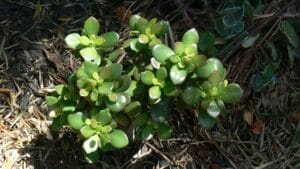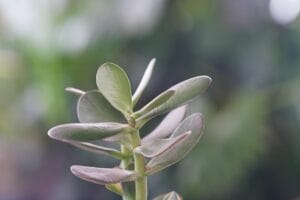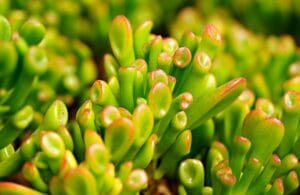how to propagate jade plant: jade plant benefits
Introduction
The Jade Plant (Crassula ovata), often called the Money Plant or Lucky Plant, is a beloved succulent known for its thick, shiny green leaves and tree-like shape. Native to South Africa, this hardy indoor plant has become a symbol of wealth, prosperity, and good fortune in homes and offices across the USA. Beyond its spiritual symbolism, the Jade Plant is incredibly popular for its low maintenance needs, making it ideal for beginners and busy plant parents alike. With just a little sunlight, occasional watering, and proper care, this succulent can thrive for decades—some even say it gets better with age! Whether you’re starting your indoor garden or looking to bring balance and greenery to your space, learning how to care for a Jade Plant is a rewarding experience. In this guide, you’ll discover everything from sunlight requirements to propagation tips to help your plant flourish.

| Feature | Details |
| Botanical Name | Crassula ovata |
| Common Names | Jade Plant, Money Plant, Lucky Plant |
| Plant Type | Succulent |
| Light | Bright indirect to direct sunlight |
| Water | Low; let soil dry between watering |
| Soil | Well-draining cactus/succulent mix |
| USDA Zones | 10–11 (outdoor), indoors anywhere |
| Toxicity | Mildly toxic to pets (ASPCA warning) |
Light Requirements
Jade Plants thrive in bright, indirect sunlight and can tolerate several hours of direct light daily. A south- or west-facing window is ideal, where the plant can receive at least 4 to 6 hours of natural light. Adequate sunlight helps maintain the plant’s compact shape, promotes healthy growth, and can even give the leaf edges a reddish tint—a sign of good sun exposure. In low light, Jade Plants may become leggy and lose their vibrant color. If growing indoors with limited light, consider using a grow light to supplement. Rotate the plant occasionally for even growth on all sides.
Watering
Watering a Jade Plant properly is essential for its health. As a succulent, it stores water in its thick leaves, so it doesn’t need frequent watering. Always allow the soil to dry out completely between waterings. Use the “soak and dry” method—water thoroughly until it drains out of the bottom, then wait until the soil feels dry several inches down before watering again. In winter, reduce watering significantly as the plant goes dormant.
Overwatering is the most common mistake, often leading to root rot. Signs of trouble include yellow, mushy leaves. Always use well-draining soil and pots with drainage holes.

Soil and Potting
The Jade Plant thrives best in well-draining soil, which prevents root rot and other moisture-related issues. A cactus or succulent mix is ideal, as it mimics the plant’s natural arid environment. You can also make your own by combining regular potting soil with coarse sand or perlite. Always use a pot with drainage holes to ensure excess water escapes.
Terra cotta pots are recommended because they allow the soil to dry faster. Avoid overly rich or moisture-retentive soil, as it can lead to root damage. Repot every 2–3 years to refresh the soil and promote healthy growth.
Temperature & Humidity
The Jade Plant thrives in typical indoor temperatures between 65°F and 75°F (18°C–24°C), making it perfect for most U.S. households. It prefers a warm environment and should be protected from cold drafts or temperatures below 50°F (10°C), which can cause leaf drop or damage.
During summer, it can be placed outdoors, but bring it back inside before the first frost. Humidity is not a major concern—Jade Plants adapt well to low-humidity indoor air, so there’s no need for misting. This low-maintenance nature makes it ideal for dry climates and air-conditioned homes alike.
Fertilizing the Jade Plant
Fertilizing your Jade Plant is essential for healthy, balanced growth, especially during the active growing season. Use a diluted, balanced liquid fertilizer (such as 10-10-10 or 20-20-20) once a month during spring and summer. Avoid overfeeding, as too much fertilizer can lead to weak, leggy growth and salt buildup in the soil.
In the fall and winter, when the plant goes dormant, stop fertilizing altogether. Always water the plant before feeding to prevent root burn. For organic options, a light dose of compost tea or worm castings works well. A little feeding goes a long way with Jade Plants!

Pruning & Shaping
Pruning your Jade Plant is essential for encouraging a fuller, tree-like shape and preventing legginess. Use clean, sharp scissors or pruning shears to trim leggy or overcrowded stems, ideally in spring or early summer when the plant is actively growing. To promote branching, snip just above a leaf node or remove the top inch of new growth. Always prune lightly—Jade Plants grow slowly, and over-pruning can stress the plant.
Remove any dead or shriveled leaves to maintain its appearance and health. Regular pruning not only keeps your Jade compact and beautiful but also improves air circulation around the plant.
How to Get a Jade Plant to Bloom
Yes, Jade Plants can bloom!
- Flowers are small, star-shaped, and white or pale pink.
- Blooming typically happens in mature plants (5+ years) under:
- Cooler night temps
- Shorter days (winter)
- Slightly stressed watering
Repotting a Jade Plant
Jade grows slowly, so it doesn’t need frequent repotting.
- Repot every 2–3 years or when roots outgrow the pot.
- Use a slightly larger container with drainage.
- Best time: Spring
Propagating Jade Plants
It’s super easy to make more Jade Plants!
Leaf or Stem Cutting:
- Cut a healthy leaf or stem and let it dry for 1–2 days.
- Place in dry soil, then wait to water until roots form (2–3 weeks).
- New plants will sprout easily with minimal care.
This is a great way to gift Jade Plants to friends or family!

Benefits of Growing Jade Plant
- Air purifier: Helps remove indoor pollutants (formaldehyde, benzene).
- Attracts good luck & money (Feng Shui)
- Petite size: Fits on desks, shelves, and windowsills
- Easy to care for: Great for beginners
- Beautiful look: Tree-like structure with fleshy leaves
Is Jade Plant Toxic to Pets?
Unfortunately, yes. According to the ASPCA, Jade Plant is toxic to cats and dogs if ingested.
- Symptoms: Vomiting, lethargy, coordination issues.
- Keep it out of reach of pets or choose pet-safe alternatives.
FAQs About Jade Plants
Q1: Why are the leaves falling off my Jade Plant?
A: Overwatering, sudden temperature drops, or lack of light can cause leaf drop.
Q2: Can I keep my Jade Plant outside?
A: Yes, in USDA Zones 10–11 or in summer months. Always bring it inside before frost.
Q3: How big can a Jade Plant get?
A: Indoors, it can grow up to 3–5 feet tall with proper care.
Q4: Do Jade Plants need direct sunlight?
A: They thrive in bright, indirect to direct sunlight but can adapt to partial shade.
Q5: How long do Jade Plants live?
A: With care, they can live 20–50 years or more—some are passed down generations!
Conclusion
The Jade Plant is more than just a pretty succulent—it’s a symbol of prosperity, an easy-care houseplant, and a long-lasting companion for plant lovers. Its tree-like shape and rich green leaves bring life, balance, and calm into any space.
Whether you’re a beginner or a seasoned gardener, this plant will thrive with just a bit of sun, a splash of water, and some love.

